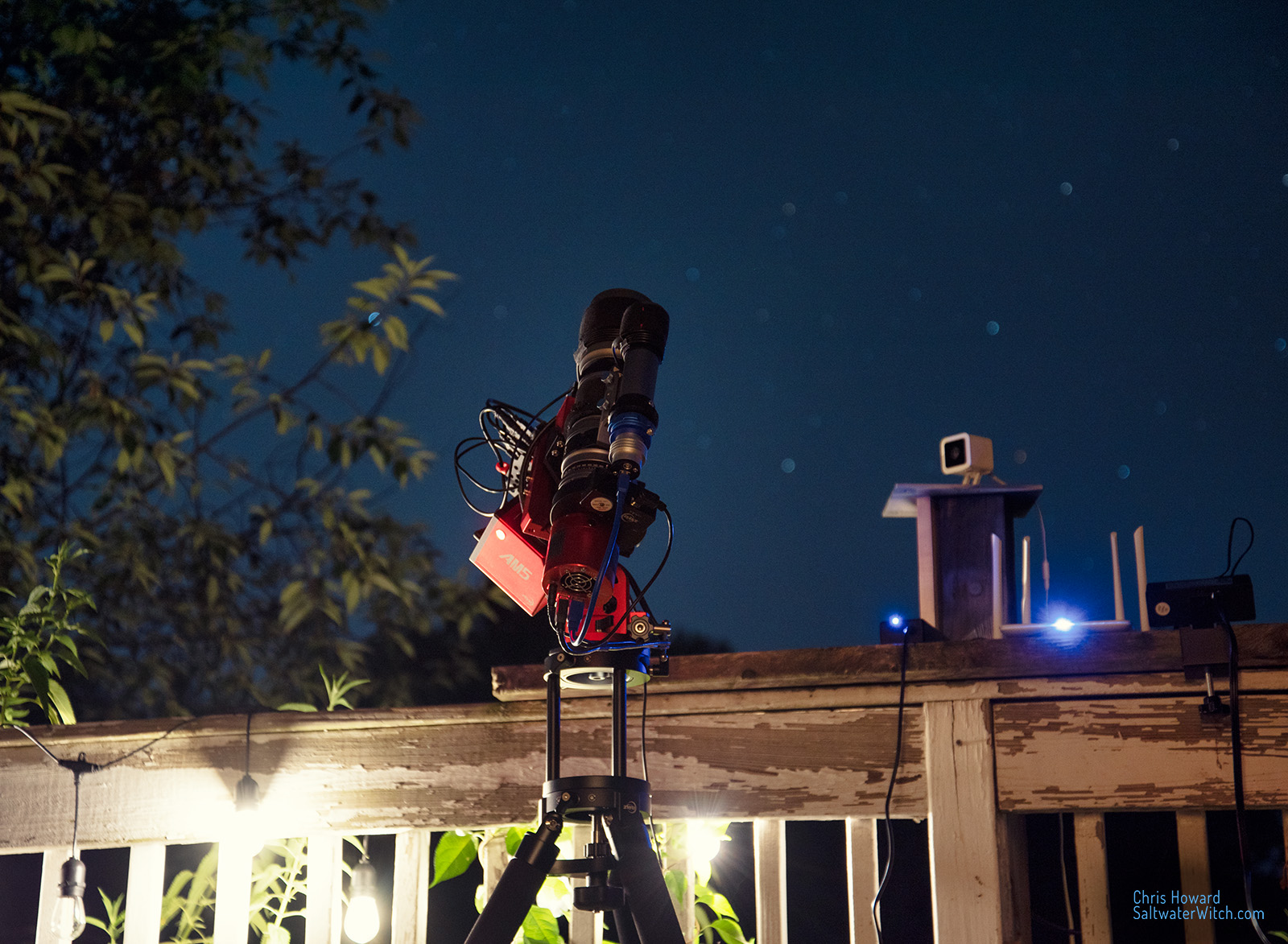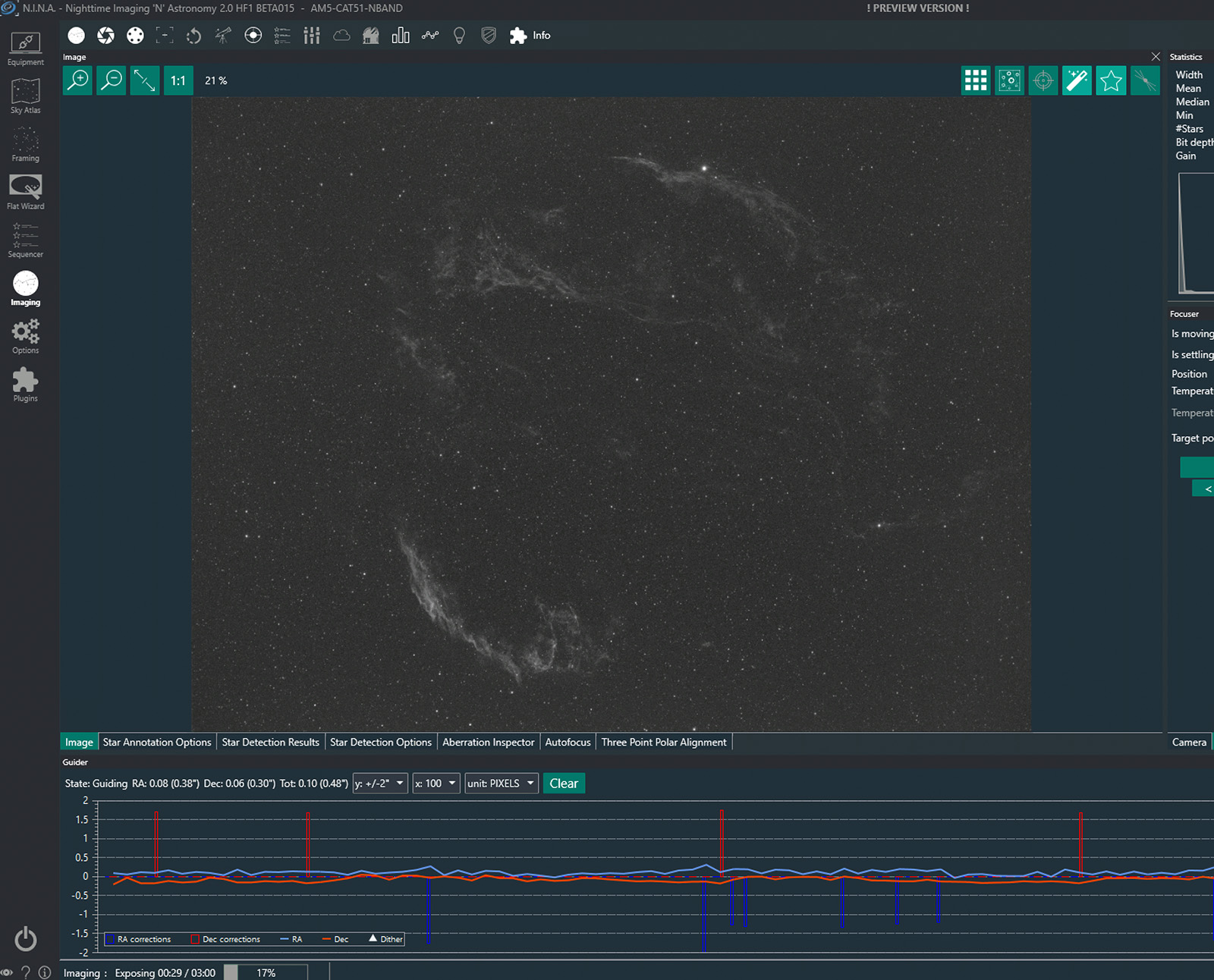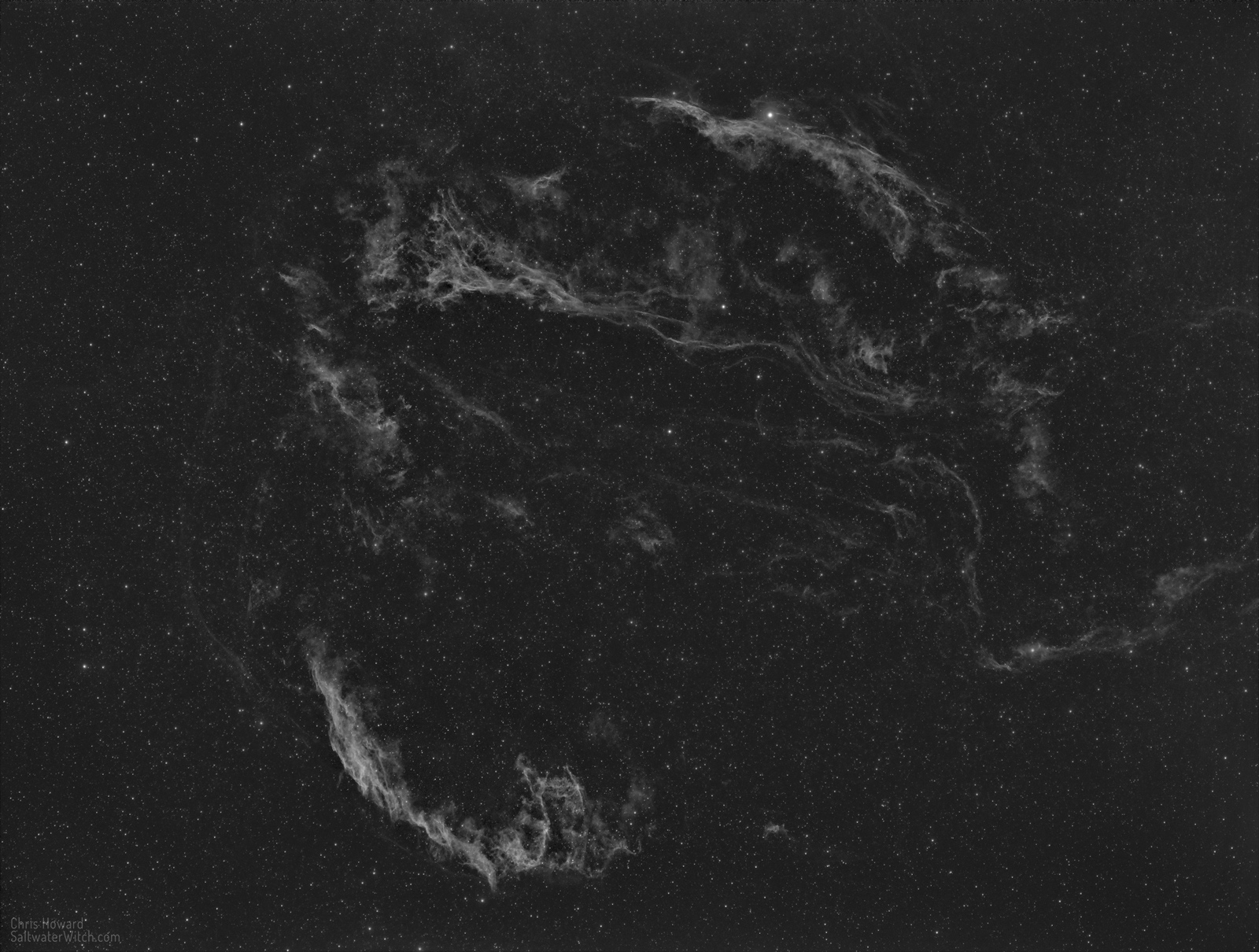ZWO AM5 First Light
August 3, 2022
First night out with the ZWO AM5 strain-wave gear/harmonic drive mount, and I am just stunned at how easy this mount is to setup, polar align, and run.
I swung the scope south to IC 4665—I just picked a nice star cluster in Ophiuchus, near the meridian in the south. I cleared calibration in PHD2, ran a new calibration, and then guided for an hour. I ran with defaults, 1 second exposures. Total RMS error through the session was between 0.4 and 0.7 arcseconds. And then I jumped into a bunch of 180 second subs of the Veil Nebula in Ha, watching the guide graph hovering in the high .4s and low .5s.
This was my first time setting up the AM5 for a night of imaging, and I think I was expecting something weird or some tech idiosyncrasy to appear, because that's the way it always is. New devices are just going to behave in ways you might not anticipate. This was my first experience positioning the mount, scope, and tripod, which I easily carried out to the deck with everything connected and ready to go—tripod, mount, scope, everything. Polar alignment in NINA is simple and automated, and the AM5 azimuth and altitude adjustments are smooth and easy to dial in. I had the mount aligned and ready to capture data in two or three minutes. Again, I'm a bit stunned at how uncomplicated this was—I was expecting something to go wrong, but the AM5 was just doing everything right, with accurate slewing, guiding, tracking, and I was sitting on the couch in the living room taking 180 second subs on the back deck.
Some surprises: I didn't expect the AM5 to be so compact and transportable—and I say this knowing my primary purpose for buying the mount was portability. It's crazy how easy this is to move around, and I think it comes down to the counterweights. They are a such a fundamental part of the system that it felt like I had missed something in setup, but after one night under the stars with the AM5, I'm thinking—unless you have a massive scope—counterweights should be a thing of the past. We have the technology. Why do we need them?
I did try out the new mount with Ekos/INDI and ran into an error connecting the AM5—an error setting the UTC Offset. I didn't dig into it, but it looks like a similar error—an old error—with the LX200 instruction set where Ekos is using a float and the mount is expecting an integer for the offset? Seems pretty minor to me, and easily fixable, so I will come back to Ekos soon as I have some time.
NINA/ASCOM worked flawlessly with the ZWO AM5, at least with my standard workflow: polar alignment, slewing, plate solving, guiding, focus, capture. I'm running Version 2.0 HF1 BETA015 on a fanless Windows 10 machine.
Finally, the skies weren't perfect, seeing was maybe a little above average, and the mount performed with those total RMS error numbers, .4, .5, .6 arcseconds. Amazing.


Here's 36 x 180-second subs, no calibration frames, stacked in DSS, stretched in Photoshop CC2022:

